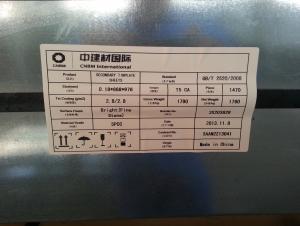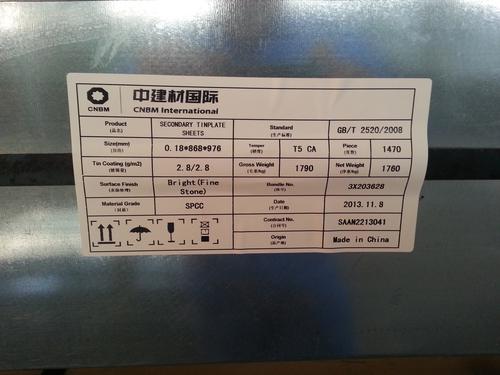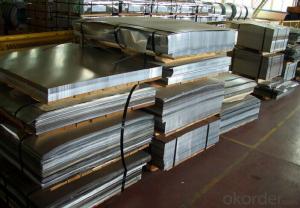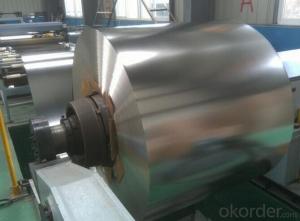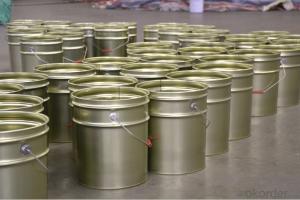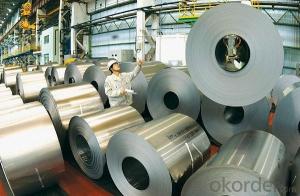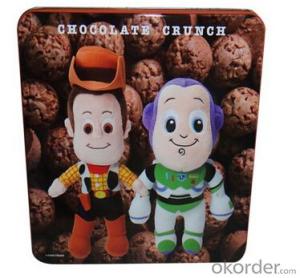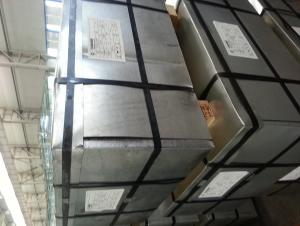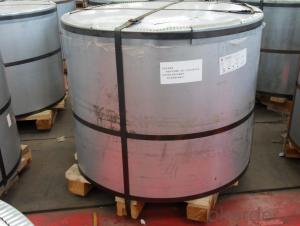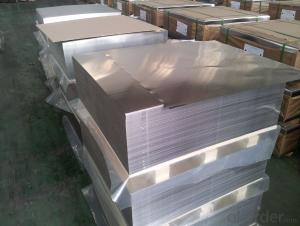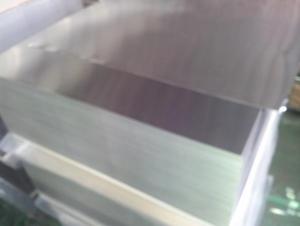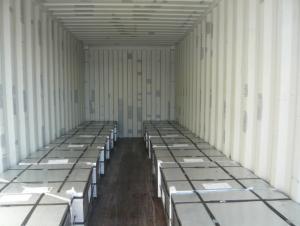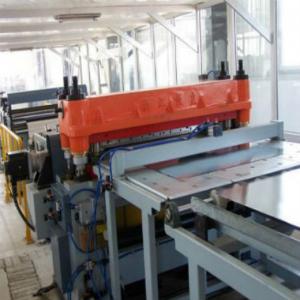Tinplate for Food and Chemical Cans, Container
- Loading Port:
- China main port
- Payment Terms:
- TT or LC
- Min Order Qty:
- 50 m.t.
- Supply Capability:
- 400000 m.t./month
OKorder Service Pledge
OKorder Financial Service
You Might Also Like
Prime Quality Tinplate Sheets Details:
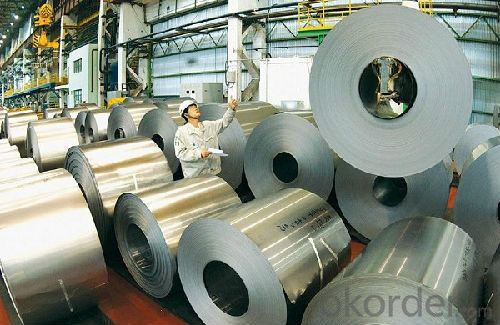
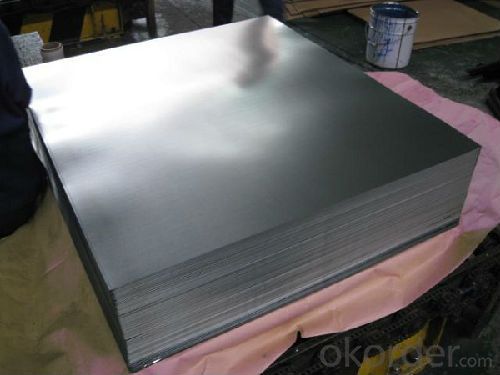
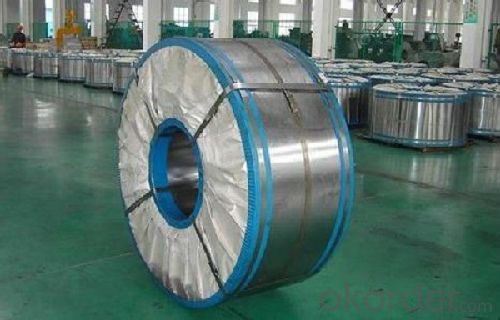
Minumum Order Quantity: 25 MT Loading Port:China Main Port
Annual Capacity: 400,000MT Payment Terms:TT or LC
| | | | | | |
| | | | | |
Product Description:
Prime Quality Tinplate Sheets Usage and Applications
Prime Quality Tinplate Sheets Specifications
Standard : GB2520-2000 ,JIS G3303
Steel type : SPCC
Coating : 2.8/2.8
Surface: Bright, Stone ,
Thickness:0.18
Width :600MM~1000MM
Temper : T1~T5
Package: tinplate wrapped completely with an inner cover of plastic or waterproof papers with vorners protected with metal angels.
Applications
Chemicals and painting cans
Dry food cans, such as fancy cans, biscuit cans, milk power cans, tea cans
Liquid food cans, such as edible oil cans, beverage cans, Tomato paste cans
Sea food cans
Crown corks, easy open ends(EOE)
Electrical machinery parts
Bakeware and household kitchen parts
FAQ
CNBM International Corporation
CNBM International Corporation, as an important import and export platform of CNBM Group, enjoys competitive advantages in importing and exporting of building materials as well as complete sets of machinery and equipments, engineering, and project contracting.
Factory Introduction
CNBM as one of the largest suppliers in tinplate industry, offers clientss prime quality tinplate in both coil and sheets. With multi-plants and fully integraded production, the annual capacity of tinplate is 400,000MT.
To ensure the high quality if the tinplate, CNBM owns complete equipment series.
- Reversing cold rolling machines: 14 sets
- Continuous rolling machines: 2 sets
- BA furnaces: 50
- CA line: 1
- Tinplate production line: 2
- SA& DA reduced tinplate sheet: Available
CNBM also produce other steel products, such as cold-rolled steel, hot dip galvanized steel, color coated steel and tin free steel coils and sheets.
- Q: How does tinplate contribute to the overall tamper-evident packaging?
- Tinplate contributes to the overall tamper-evident packaging by providing a strong and durable material that can be easily sealed and remains intact when tampering is attempted. Its resistance to corrosion and tampering makes it an ideal choice for ensuring the security of packaged products.
- Q: How does tinplate compare to other types of packaging materials?
- Tinplate is known for its durability, strength, and resistance to corrosion, making it superior to many other packaging materials. It offers excellent protection against moisture, light, and oxygen, which helps preserve the quality and freshness of the packaged products. Moreover, tinplate is highly versatile, allowing for creative designs and printing options, making it visually appealing to consumers. While it may be slightly more expensive than some alternatives, tinplate's numerous advantages make it a preferred choice for packaging in various industries.
- Q: How does tinplate compare to plastic packaging?
- Tinplate packaging offers several advantages over plastic packaging. Firstly, tinplate is more durable and can withstand higher temperatures, making it suitable for preserving food and beverages. It also provides better protection against external factors such as sunlight, moisture, and oxygen, thus ensuring the longevity and quality of the contents. Additionally, tinplate is fully recyclable and has a higher recycling rate compared to plastic, making it a more sustainable choice. Lastly, tinplate packaging has a premium appearance that can enhance the product's perceived value and appeal to consumers.
- Q: Can tinplate be used for packaging of chemicals?
- Yes, tinplate can be used for the packaging of chemicals. Tinplate is a durable and corrosion-resistant material that can withstand the harsh conditions and potential reactivity of certain chemicals. It provides a protective barrier against moisture, oxygen, and light, ensuring the integrity and safety of the packaged chemicals. Additionally, tinplate is also recyclable, making it an environmentally friendly choice for chemical packaging.
- Q: What are the main differences between tinplate and tinplate laminates in terms of barrier properties?
- Tinplate and tinplate laminates differ in terms of barrier properties primarily due to their composition and structure. Tinplate is a steel sheet coated with a thin layer of tin, which provides excellent corrosion resistance but limited barrier properties against gases and moisture. On the other hand, tinplate laminates consist of a tinplate base combined with additional layers, such as plastic or paper, which significantly enhance the barrier properties. These laminates offer improved resistance against gases, moisture, and light, making them suitable for packaging applications requiring higher protection and preservation of the contents.
- Q: How is tinplate stored?
- Tinplate is typically stored in a dry and well-ventilated area to prevent moisture and rust formation. It should be kept away from direct sunlight, extreme temperatures, and any corrosive substances. Additionally, stacking tinplate sheets or coils should be done carefully to avoid any damage or deformation.
- Q: How is tinplate stored and transported?
- Tinplate is typically stored and transported in rolls or sheets. It is commonly packaged in coils and secured with strapping or wrapping to prevent damage during transportation. These coils or sheets are then loaded onto trucks, ships, or trains for distribution to manufacturers and consumers. Additionally, proper handling and storage conditions are crucial to maintain the quality of tinplate, such as protecting it from moisture, extreme temperatures, and physical impact.
- Q: What are the health and safety concerns associated with tinplate?
- Some health and safety concerns associated with tinplate include potential exposure to tin, which can cause respiratory issues and skin irritation if inhaled or in contact with the skin for prolonged periods. Additionally, the coatings used on tinplate may contain harmful chemicals like bisphenol A (BPA), which has been linked to various health problems. It is important to handle and use tinplate products with caution, ensuring adequate ventilation and avoiding direct contact with the coating.
- Q: What are the common quality standards for tinplate?
- The common quality standards for tinplate include factors such as the thickness and uniformity of the tin coating, the absence of defects like scratches or dents, the adhesion of the tin coating to the base metal, and the overall dimensional and mechanical properties of the tinplate.
- Q: How is tinplate different from other types of metal packaging?
- Tinplate is different from other types of metal packaging, such as aluminum or steel, primarily because it is made from thin sheets of steel coated with a layer of tin. This tin coating provides several advantages, including corrosion resistance, enhanced shelf life, and a glossy appearance. Additionally, tinplate is lightweight, malleable, and easy to shape, making it suitable for various packaging applications.
Send your message to us
Tinplate for Food and Chemical Cans, Container
- Loading Port:
- China main port
- Payment Terms:
- TT or LC
- Min Order Qty:
- 50 m.t.
- Supply Capability:
- 400000 m.t./month
OKorder Service Pledge
OKorder Financial Service
Similar products
Hot products
Hot Searches
Related keywords
